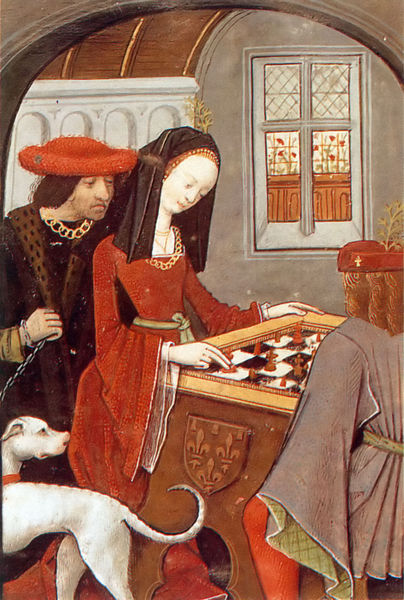Next time you're in Paris, be sure to check out the National Museum of the Renaissance (Musée national de la Renaissance) housed in the beautiful château of Écouen. Located twenty kilometers north of Paris, this museum is a veritable treasure house of sixteenth-century painting, sculpture, pottery, furniture and textiles and is well worth a visit for anyone interested in the era.
The château was built by the Constable of France, Anne de Montmorency, between 1538 and 1555 and served as his principal residence. Many of the noted artisans who worked on the renovation of Fontainebleau participated in its construction. Decorated with painted tile, carved woodwork, stained glass, marble statues, fountains, murals and friezes, the château provided a fitting setting for Montmorency's extensive collections of faïence, enamels, paintings, books and tapestries. It remained in the Constable's family until 1632; during the Revolution, it was used as a patriotic club, prison, and military hospital; in 1805 Napoleon dedicated it as a school for educating daughters of members of the Legion of Honor. Amazingly, it continued to be used as a school for young women until 1962, when it passed into the hands of the ministry of culture and, after extensive renovations, opened as a museum in 1977.
The museum's collections are outstanding. Highlights include twelve painted chimneys; all ten panels of the famous David and Bathsheba tapestry; one of Europe's most complete collections of lace; a superb collection of table clocks and watches; and display case upon display case of enameled cups, plaques, and bowls and other objets d'art. The museum is currently featuring an exhibit on sixteenth-century medicine and regularly hosts concerts, lectures, and other special events. Best of all, the website indicates that entry is free up through June 2008.
For decades, Anne de Montmorency was one of France's most powerful men. A trusted advisor of François I, he became even more prominent and prosperous under the protection of Henri II. Montmorency used his extreme wealth to become a noted patron of the arts. The museum's website reveals that at the time of his death in 1567, he owned 130 châteaux throughout France, in addition to two sumptuous Parisian residences. But, it concludes, Écouen remains his masterpiece.
Be sure not to miss it on your next visit!
Friday, April 11, 2008
Subscribe to:
Post Comments (Atom)













No comments:
Post a Comment